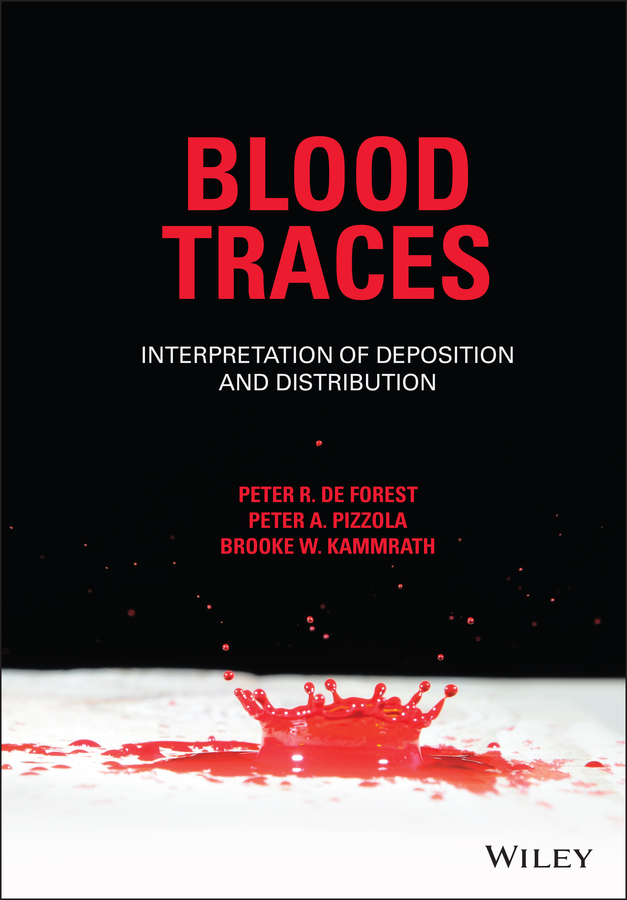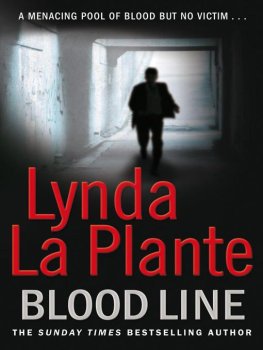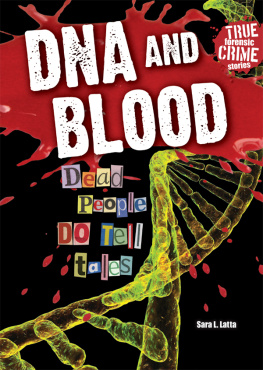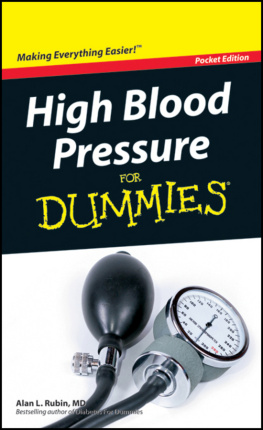
Table of Contents
List of Tables
- Chapter 1
- Chapter 3
- Chapter 7
List of Illustrations
- Chapter 1
- Chapter 2
- Chapter 3
- Chapter 4
- Chapter 5
- Chapter 6
- Chapter 7
- Chapter 10
- Chapter 11
- Chapter 12
- Chapter 13
- Chapter 14
Guide
Pages
Blood Traces
Interpretation of Deposition and Distribution
PETER R. DE FOREST
City University of New York
New York, NY, USA
PETER A. PIZZOLA
Pace University
New York, NY, USA
BROOKE W. KAMMRATH
University of New Haven
West Haven, CT, USA

This edition first published 2021
2021 John Wiley & Sons Ltd
All rights reserved. No part of this publication may be reproduced, stored in a retrieval system, or transmitted, in any form or by any means, electronic, mechanical, photocopying, recording or otherwise, except as permitted by law. Advice on how to obtain permission to reuse material from this title is available at http://www.wiley.com/go/permissions.
The right of Peter R. De Forest, Peter A. Pizzola and Brooke W. Kammrath to be identified as the authors of this work has been asserted in accordance with law.
Registered Offices
John Wiley & Sons, Inc., 111 River Street, Hoboken, NJ 07030, USA
John Wiley & Sons Ltd, The Atrium, Southern Gate, Chichester, West Sussex, PO19 8SQ, UK
Editorial Office
The Atrium, Southern Gate, Chichester, West Sussex, PO19 8SQ, UK
For details of our global editorial offices, customer services, and more information about Wiley products visit us at www.wiley.com.
Wiley also publishes its books in a variety of electronic formats and by printondemand. Some content that appears in standard print versions of this book may not be available in other formats.
Limit of Liability/Disclaimer of Warranty
In view of ongoing research, equipment modifications, changes in governmental regulations, and the constant flow of information relating to the use of experimental reagents, equipment, and devices, the reader is urged to review and evaluate the information provided in the package insert or instructions for each chemical, piece of equipment, reagent, or device for, among other things, any changes in the instructions or indication of usage and for added warnings and precautions. While the publisher and authors have used their best efforts in preparing this work, they make no representations or warranties with respect to the accuracy or completeness of the contents of this work and specifically disclaim all warranties, including without limitation any implied warranties of merchantability or fitness for a particular purpose. No warranty may be created or extended by sales representatives, written sales materials, or promotional statements for this work. The fact that an organization, website, or product is referred to in this work as a citation and/or potential source of further information does not mean that the publisher and authors endorse the information or services the organization, website, or product may provide or recommendations it may make. This work is sold with the understanding that the publisher is not engaged in rendering professional services. The advice and strategies contained herein may not be suitable for your situation. You should consult with a specialist where appropriate. Further, readers should be aware that websites listed in this work may have changed or disappeared between when this work was written and when it is read. Neither the publisher nor authors shall be liable for any loss of profit or any other commercial damages, including but not limited to special, incidental, consequential, or other damages.
Library of Congress CataloginginPublication Data
Names: De Forest, Peter R., author. | Pizzola, Peter A., author. | Kammrath, Brooke W., author.
Title: Blood traces : interpretation of deposition and distribution / Peter R. De Forest, Peter A. Pizzola, Brooke W. Kammrath.
Description: Hoboken, NJ : Wiley, 2021. | Includes bibliographical references and index.
Identifiers: LCCN 2021031543 (print) | LCCN 2021031544 (ebook) | ISBN 9781119764533 (cloth) | ISBN 9781119764700 (adobe pdf) | ISBN 9781119764717 (epub)
Subjects: LCSH: Bloodstain pattern analysis. | Forensic hematology. | Crime scene searches. | Evidence, Criminal. | Forensic sciencesMethodology.
Classification: LCC HV8077.5.B56 D45 2021 (print) | LCC HV8077.5.B56 (ebook) | DDC 363.25/62dc23
LC record available at https://lccn.loc.gov/2021031543
LC ebook record available at https://lccn.loc.gov/2021031544
Cover Design: Wiley
Cover Image: Courtesy of Jeffrey Buszka and Norman Marin
Dedication
We dedicate this book to our students and those scientists striving to improve the science of forensic science and its broader implementation in the service of justice.
For my late wife and life partner Carol, daughter Kimi, soninlaw Jon, son Robb, daughterinlaw Toni, and grandchildren Colby, Wesley, Helena, and Eleanor, who continue to inspire and amaze me.
Peter R. De Forest
To Lori my wife and best bud for her support and patience. And for my children Anthony, Paul, Donna, Danielle, along with their spouses and my grandchildren all of whom keep me on my toes.
Peter A. Pizzola
To my husband Matt, it is a privilege to share this life with you. I love you more. To my children Riley and Grayson, you are my motivation and joy. I love you most.
Brooke W. Kammrath
Epigraph
A poor physical evidence investigation risks punishing the victim, benefits the guilty, and may adversely impact the accused.
Foreword
From my early childhood memories, I can vividly remember how I became hooked on this black and white American TV series entitled The Fugitive that initially ran in the USA between 1963 and 1967 and that I discovered in a Frenchdubbed version a few years later. In this show, a doctor wrongfully convicted of his wife's murder manages to escape and looks for the real killer. I am not sure how my parents could let a fiveyearold watch such a show. However, it planted a seed! Many years later, in the mideighties, as an undergraduate student at the University of Lausanne, Switzerland, working under Professor Pierre Margot, and while my passion for forensic science was rapidly growing, I learned that The Fugitive might have been loosely inspired by the case of the murder of Marilyn Sheppard in 1954. Like on the TV show (and in the 1993 movie with Harrison Ford), the victim's husband, Dr. Sam Sheppard, was a doctor and was convicted for the murder. However, unlike in the fiction, the husband was acquitted at a retrial in 1967.
Why am I telling you this? First, because blood traces played a significant role in this case, particularly in the reconstruction proposed by the defence, ultimately leading to a nonguilty verdict the second time around. Further, the examination of these blood traces and the reconstruction of the events based on these observations were undertaken by one of the father figures of forensic science, Dr. Paul L. Kirk. At this point, it is worth mentioning that the authors of this book are a direct legacy of Dr. Kirk, particularly Dr. Peter R. De Forest who studied under him and subsequently worked with him for many years. With such a heritage, it is not surprising to discover such a fine book.
Next page












